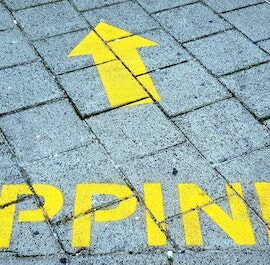

This article is an excerpt from the Shortform book guide to "Anatomy of a Breakthrough" by Adam Alter. Shortform has the world's best summaries and analyses of books you should be reading.
Like this article? Sign up for a free trial here.
What goals are you trying to achieve? Does your life keep getting in the way of achieving them?
When you’re stuck in a rut, nothing but action will get you out—so long as that action is well-considered and productive after taking a pause to review your best options. Continually taking action toward your goal turns progress into a habit that makes future slowdowns easier to avoid.
Find out how to take action on your goals with these tactics.
Action Tactic #1: Break It Down
Breaking down projects into smaller goals is a common strategy recommended by productivity experts. Here’s Adam Alter’s specific advice for how to take action on your goals: Create arbitrary benchmarks where none logically exist, such as rewarding yourself for every hour worked rather than completing specific tasks. Dividing a long-term task into smaller units lets you defer the emotional weight associated with your overall goal. Instead of being hampered by that weight, you can focus on the practical details of simply doing the next step without agonizing over your total progress.
(Shortform note: One way to follow Alter’s advice to break large goals down into bite-size units is to use Ryder Carroll’s “Bullet Journal Method.” Carroll says that it’s a common mistake to try to accomplish sweeping goals all at once, and that reducing those goals to small, self-contained projects can prevent you from being overwhelmed. Carroll’s approach is a customizable notebook journaling system that gives your efforts structure and helps set priorities while keeping work toward overarching goals contained to individual, manageable tasks.)
Action Tactic #2: Discard What’s Inessential
One way to ramp up your progress is to discard any inessential steps when you break your project into its components. After all, as stated earlier, everyone slows down in the middle of a project, whether it’s designing a month-long training program or building a business that’s years in the making. Alter suggests that wherever possible, you should cut out as much of that middle as you can. Plus, reducing a task to digestible chunks creates many more “beginnings” and “ends,” those points when your energy and motivation are strongest, while shrinking the drawn-out middle of your journey into smaller paths that are individually easier to cross.
(Shortform note: In When, business columnist Daniel Pink concurs with Alter about the motivating power of beginnings and ends, but he writes that they’re tied more closely to our biological rhythms than Alter suggests. Pink writes that you can maximize the power of beginnings by either timing them to your energy peak of the day or to a moment that carries special meaning, such as the completion of some other goal. While Pink favors powering through the middle “slump,” others agree with Alter that you should eliminate every inessential step you can—a tactic that works for organizations as effectively as it can for individuals.)
Action Tactic #3: General Housekeeping
Sometimes the next step toward your goal still won’t be clear, but there’s still productive work you can do. Every project has some tedious aspect that often gets put to the side—some of which grow into the pitfalls discussed earlier in this guide. When you’re stumped, Alter writes that one way to keep moving is to do preventative maintenance on the less-than-thrilling aspects of your work. For example, a writer stuck on her next chapter might spend time double-checking her royalty statements. Not only does this type of work let your creative mind rest, it also prevents potential future roadblocks by stopping small tasks from blooming into big ones.
(Shortform note: According to Gretchen Rubin, author of The Happiness Project, preventative maintenance does more than give your creative mind a break: It actively helps remove mental clutter by eliminating distractions that can pull your focus away from where you want it. Rubin recommends this in a literal sense—tidying up the clutter in your home—as well as in the figurative sense of cleaning up the overwhelming mental mess from a too-long to-do list. Whereas Alter suggests doing this when you’re bogged down in the middle of a project, Rubin recommends removing clutter first, before you launch yourself on a new endeavor.)

———End of Preview———
Like what you just read? Read the rest of the world's best book summary and analysis of Adam Alter's "Anatomy of a Breakthrough" at Shortform.
Here's what you'll find in our full Anatomy of a Breakthrough summary:
- What it means to be "stuck" in life
- The wrong way to deal with life’s messiness
- Methods for getting unstuck and kickstarting your life again






